How to choose lamps for illuminating violets (Saintpaulia)?
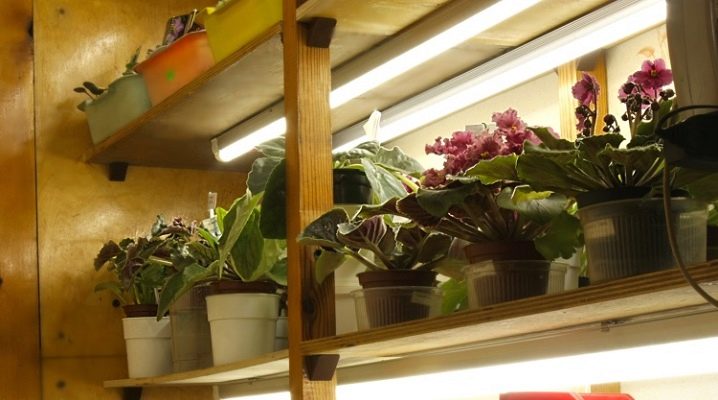
Most indoor plant lovers have their green "pets" on the windowsill. If you prefer violets, then the window sill is just the most unfavorable place for growing this type of flower. In summer, direct sunlight can burn Saintpaulia leaves. In winter, they can be exposed to hot, dry air from batteries. Another threat to Saintpaulias is cold, which inevitably penetrates even through the most insulated window.
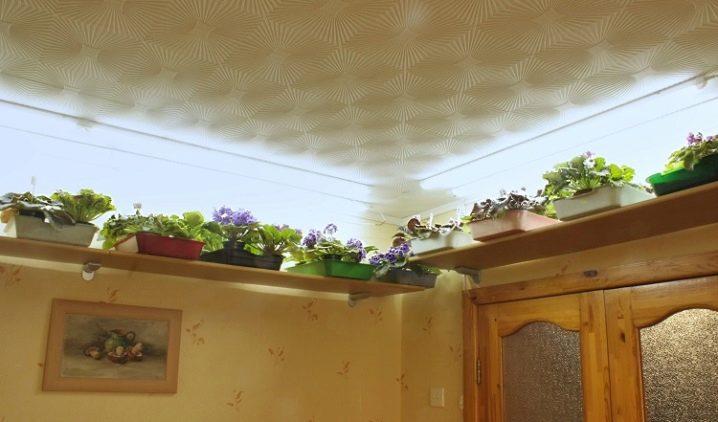
Favorable conditions
When choosing a good place for growing Saintpaulias, shelves or special shelves with lighting are the best solution. You can even use a regular wardrobe. All you need is to provide your favorite indoor plants with proper lighting., which will allow them to achieve the highest degree of decorativeness. To do this is quite simple, you just need to fix the lamps above the flowers at a distance of at least 20 centimeters. Thus, the optimal distance between shelves or shelves should be at least 55 centimeters.
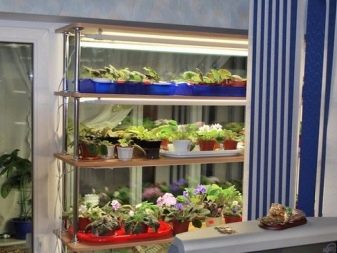

The plants themselves should be positioned so that the extreme leaves of neighboring Saintpaulias do not touch. Moreover, the number of lamps directly depends on the depth of the shelf and its size. Florists recommend installing shelves that are approximately 50 centimeters deep. Another important condition is the width of the shelves for growing Saintpaulias, thanks to which it will be convenient for the owner of this type of indoor flowers to turn the pots in different directions to the lighting to ensure full photosynthesis.
It is worth considering the features of the lamps that you will be using. As a rule, a strong stream of light is concentrated in the middle of the lamp, and at its edges it is weaker.
For this reason, plants with dark green leaves should be positioned closer to the center of the rack as they absorb more light than plants with pale green leaves.
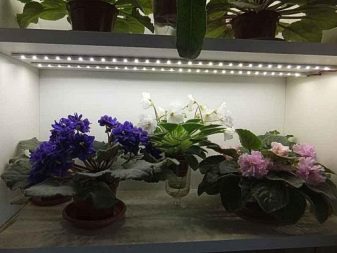
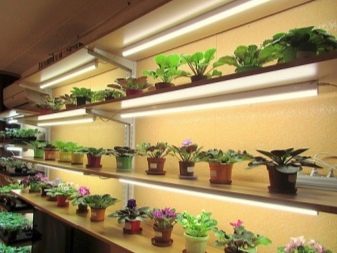
Backlight features
One of the most common problems faced by violet lovers is the lack of sunlight. Lack of lighting can lead to the following consequences:
- slowdown in growth;
- lack of flowering;
- poor development.
In order to avoid the above potential problems, it is necessary to resort to additional lighting of the plant. LED strips are great for this function. It is recommended to stop your choice on a tape, the color spectrum of which will be cold shades, and the power will not exceed 25 watts per 1 meter.
It is necessary to resort to LEDs on cloudy days or when the sun does not shine in the direction where the flowers are located.

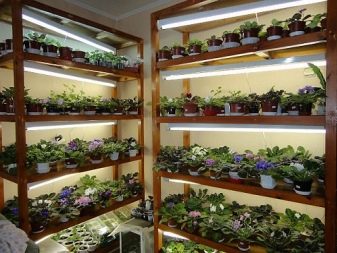
Consider the fact that for the rapid development of violets, it takes up to 14 hours of daylight hours. The LED should be on a few hours before sunset. This feature allows you to apply additional light if your plants are located on a window sill. This type of lighting will not cause discomfort to the eyes and will create coziness in the house.
Another type of lamp that could serve as additional lighting is a fluorescent lamp. If your plants are located not on a windowsill, but on a shelf, then just such a lamp will be convenient to use.The strong side of such a lamp is its ability to evenly distribute light over a rather large radius, which other types of lamps cannot boast of. As a rule, fluorescent lamps are placed over the flowers at a short distance. Most often, most people opt for this particular option.
Nevertheless, experts recommend using LED strips at home.
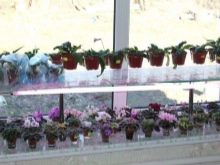
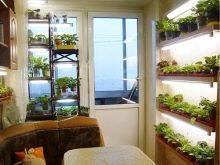

Organization
If the flowers are grown in a dark room, the role of the selection of the luminous flux spectrum becomes even more important, since the lamp becomes the main and only light source for flowers placed in such growing conditions. The speed of development and the duration of the growing season of Saintpaulia will depend on your application of the spectrum.
If there is no daylight in the room where the violets grow, it is worth resorting to using full artificial lighting. Phytolamps will help you cope with this. Due to their purpose, they emit the necessary colors (red and blue) to fully saturate the plants with light. The power of such lamps depends on their length. So, a phytolamp with a length of more than 90-120 cm has a power of 36-40 watts.
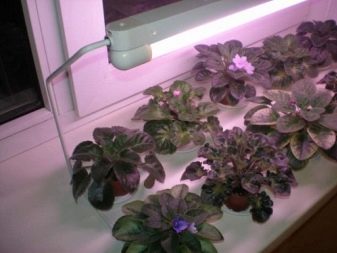
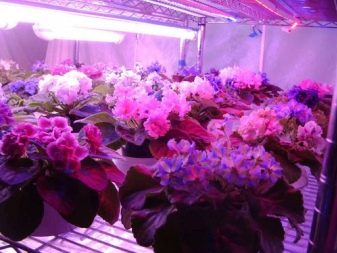
If you want to achieve a healthy and vibrant color of your violets, then purchasing a wide range of lamps would be an excellent solution. Plants will look great underneath and will be neat. In this case, it is better to give preference to German companies. Almost all types of lamps from German manufacturers include a full range of spectra. The main characteristic feature of such lamps is the ratio of the shades of the rays.
Quite often, the color of plants that are under phyto-lamps is perceived by human vision in a distorted light. This is due to the presence of a small amount of green rays in the spectrum of this type of lamp. To avoid such a problem, it is necessary to resort to combined artificial lighting. Usually fluorescent lamps are combined with phytolamps.
Please note that a special type of fluorescent lamp must be selected for each type of phytolamp.


Whatever types of lamps for violets you choose, a timer relay will help to facilitate the task of organizing the correct and high-quality illumination. Thanks to this device, you will be able to control the duration and frequency of light arrival.
It is worth noting that, assuming full artificial light, the light spectrum must be taken into account.
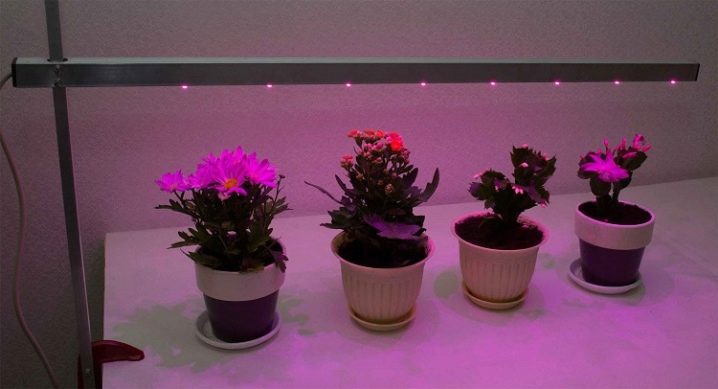
For how to easily solve the issue with the backlit violets, see the video below.































The comment was sent successfully.